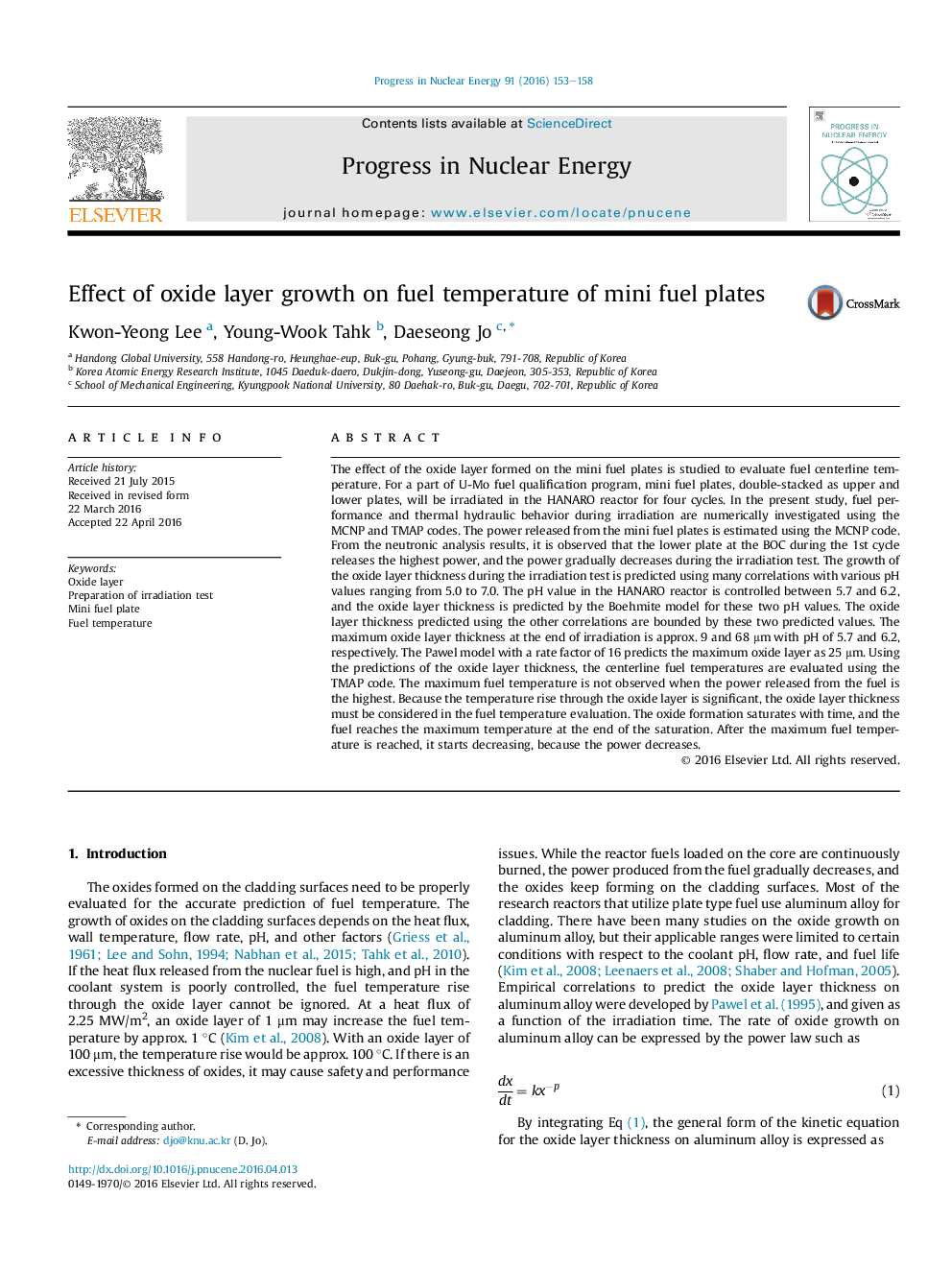| کد مقاله | کد نشریه | سال انتشار | مقاله انگلیسی | نسخه تمام متن |
|---|---|---|---|---|
| 8084855 | 1521747 | 2016 | 6 صفحه PDF | دانلود رایگان |
عنوان انگلیسی مقاله ISI
Effect of oxide layer growth on fuel temperature of mini fuel plates
ترجمه فارسی عنوان
اثر رشد لایه اکسید بر دمای سوخت صفحات مینی سوخت
دانلود مقاله + سفارش ترجمه
دانلود مقاله ISI انگلیسی
رایگان برای ایرانیان
کلمات کلیدی
لایه اکسید، آماده سازی آزمایش تابش، صفحه سوخت کوچک دمای سوخت،
موضوعات مرتبط
مهندسی و علوم پایه
مهندسی انرژی
مهندسی انرژی و فناوری های برق
چکیده انگلیسی
The effect of the oxide layer formed on the mini fuel plates is studied to evaluate fuel centerline temperature. For a part of U-Mo fuel qualification program, mini fuel plates, double-stacked as upper and lower plates, will be irradiated in the HANARO reactor for four cycles. In the present study, fuel performance and thermal hydraulic behavior during irradiation are numerically investigated using the MCNP and TMAP codes. The power released from the mini fuel plates is estimated using the MCNP code. From the neutronic analysis results, it is observed that the lower plate at the BOC during the 1st cycle releases the highest power, and the power gradually decreases during the irradiation test. The growth of the oxide layer thickness during the irradiation test is predicted using many correlations with various pH values ranging from 5.0 to 7.0. The pH value in the HANARO reactor is controlled between 5.7 and 6.2, and the oxide layer thickness is predicted by the Boehmite model for these two pH values. The oxide layer thickness predicted using the other correlations are bounded by these two predicted values. The maximum oxide layer thickness at the end of irradiation is approx. 9 and 68 μm with pH of 5.7 and 6.2, respectively. The Pawel model with a rate factor of 16 predicts the maximum oxide layer as 25 μm. Using the predictions of the oxide layer thickness, the centerline fuel temperatures are evaluated using the TMAP code. The maximum fuel temperature is not observed when the power released from the fuel is the highest. Because the temperature rise through the oxide layer is significant, the oxide layer thickness must be considered in the fuel temperature evaluation. The oxide formation saturates with time, and the fuel reaches the maximum temperature at the end of the saturation. After the maximum fuel temperature is reached, it starts decreasing, because the power decreases.
ناشر
Database: Elsevier - ScienceDirect (ساینس دایرکت)
Journal: Progress in Nuclear Energy - Volume 91, August 2016, Pages 153-158
Journal: Progress in Nuclear Energy - Volume 91, August 2016, Pages 153-158
نویسندگان
Kwon-Yeong Lee, Young-Wook Tahk, Daeseong Jo,
